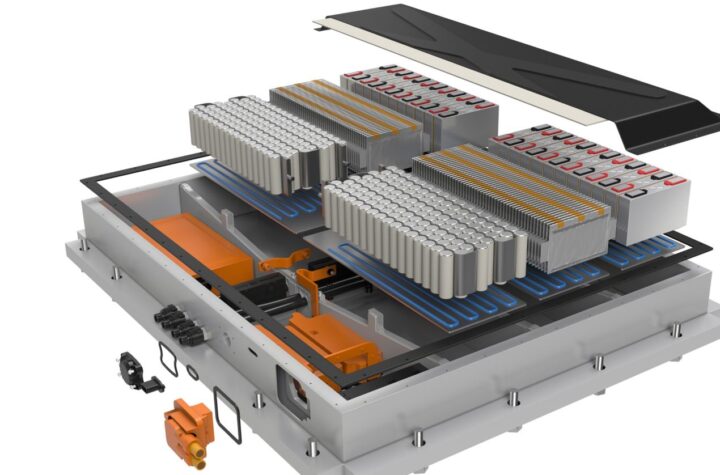
Most fuel experts agree that the ideal alternative fuel for the future is hydrogen. It’s clean and abundant. But, unfortunately, it’s also a long way off thanks to problems with storage and refueling.
Still automakers and government officials do not want to be dependent on gasoline for the next 10 to 15 years. They, instead, are looking to several alternative fuels that can help not only with emissions but also with what many call national energy security.
The fuels range from biodiesel to propane. Most are renewable but most are also more expensive than gasoline.
Biodiesel “Biodiesel is coming on very strong,” says Richard Parish, senior project leader at the Center for Transportation Technology and Systems at the National Renewable Energy Laboratory.
“Biodiesel is coming on very strong,” says Richard Parish, senior project leader at the Center for Transportation Technology and Systems at the National Renewable Energy Laboratory.
Use of this fuel has grown dramatically over the last several years and is the alternative fuel receiving the most attention right now says Melissa Howell, executive director of the Kentucky Clean Fuels Coalition. Biodiesel is a diesel replacement or additive made from vegetable oils and animal fats. It comes from two primary and plentiful sources — soybean oil and yellow grease from restaurants, says Howell.
It can be blended with petroleum diesel fuels or used as pure biodiesel. Blends traditionally start at five percent biodiesel and 95 percent petroleum (B5). Blends less than 20 percent (B20) can be used in existing diesel engines without any engine alterations, Howell says.
Several equipment makers including Detroit Diesel, Cummins and Caterpillar have even endorsed the use of biodiesel in their products. “They said if you use our products we will not void the warranty but only to a B5 blend,” Howell says.
Higher blends can be used in engines built since 1994 with a few modifications but transportation and storage need special management. Biodiesel reduces emissions of unburned hydrocarbons, carbon monoxide, sulfates, polycyclic aromatic hydrocarbons, nitrated polycyclic aromatic hydrocarbons and particulates. While it reduces emissions it does not reduce nitrogen oxide, Parish says. Additionally, the higher the biodiesel content (B5 vs. B20) the larger the environmental impact.
“The emissions benefit greatly improvess between 2 percent and 20 percent,” Howell says. It also does not reduce a vehicle’s performance and can be used in virtually any type of vehicle on or off road. “Anybody who has a diesel vehicle can use biodiesel,” Howell says. Since biodiesel is made from soybean, U.S. farmers can grow as much as needed reducing the U.S. dependency on foreign oil, Howell says.
One of the drawbacks is that the fuel is not readily available. It is also more expensive than diesel. A B2 blend costs 3 cents more per gallon than diesel while a B20 blend costs 18 cents to 25 cents more than diesel. Another problem is that the two largest consumers of petroleum diesel are the United States Navy and the railroad industry. With the tremendous amount of diesel they use a switch to biodiesel would be extremely costly.
But the government is looking at legislation for incentives on renewable fuels and that would help biodiesel sales.
While the biodiesel industry has already started heavy marketing of the fuel to fleet owners, the average person is not aware of this fuel. If automakers decide to bring more diesel sedans and SUVs to the U.S. consumers will need to be well-informed about this alternative fuel.
Additionally, says Parish, the petroleum industry will need to be educated about biodiesel. To this point it has not shown must interest in the fuel since it offsets petroleum and is made from a biological process much different oil.
It is a foreign concept to them, he says.
Ethanol
With several million ethanol vehicles on the road today, the use of ethanol as a fuel should be higher. But unfortunately, the ethanol industry is not behind the use of the substance as a fuel which subsequently has driven up the price of ethanol.
Ethanol is an alcohol based fuel. It can be made from any biological feedstock that contains substantial amounts of sugar or materials that can be converted into sugar. Sugar beets and sugar cane contain sugar while corn can be converted into sugar.
Additionally, trees and grasses can be converted to sugar since they are made up of cellulose.
“We can grow more,” Howell says. “We can make more. We don’t have to import it.” There is an unbelievable number of ethanol plants in the U.S., Howell says. There are even more plants coming, Parish says. “There is something driving that,” Howell says. But it’s not E85 (85 percent ethanol and 15 percent petroleum) — the ideal fuel for the flex-fuel vehicles already on the road. Instead, ethanol is being used as an oxygenate blended with gasoline. According to the Alternative Fuel Data Center (AFDC), more than 1.5 billion gallons of ethanol are added to gasoline each year. This increases octane and improves the quality of emissions.
Used in this way, ethanol companies can get a higher price for the fuel. Ethanol costs about 20 cents to 50 cents more per gallon than gasoline.
“If it’s about the economy John Q. Public won’t pull up and put ethanol in,” Howell says. Unlike biodiesel, vehicles must be produced to be ethanol compatible since ethanol cannot come into contact with aluminum. While ethanol doesn’t look any different than gas it must be dispensed differently and requires a different pump.
Ethanol helps with national energy security since it can be grown and processed in the U.S., say government officials. It is also a good thing for farmers who can grow as much as needed and for the environment since it is cleaner than gasoline and has much lower carbon dioxide emissions.
“It does have some drawbacks,” Howell says. It is not as efficient as gasoline. Customers would pay more but would lose 25 percent of range, she says.
It also is not readily available as a fuel. For example, say Howell, Kentucky has only one E85 retail site.
Because it needs to be dispensed differently and it costs more for consumers, most retailers are hesitant to even make the investment to add it to their lineup.
“It’s a hard sell to make with the E85,” she says.
Parish agrees saying, “if there were more stations around it would be easier to use.”
Methanol
In the late ‘80s and early ‘90s methanol was the alternative fuel of choice. California alone had more than 20,000 methanol fuel compatible vehicles on its roads, says Louis Browning, principal in the transportation practice at ICF consulting and a 30-year expert in alternative fuels and alternative fuel technology. But when methanol producers discovered there was a larger market for methanol as a gasoline oxygenate, prices rose and methanol stopped being used as a fuel. “It basically become cost prohibitive to drive vehicles on methanol because of this market shift,” he says. “Slowly but surely people stopped using it and the stations dried up.”
Methanol is an alcohol fuel, says the AFDC. It is produced by steam reforming natural gas to create a synthesis gas. It is fed into a reactor vessel in the presence of a catalyst to produce methanol and water vapor.
Biomass or coal can also be used instead of natural gas giving it the designation of renewable fuel.
It is easy to dispense but has no cost advantage over gasoline.
Methanol’s future in the auto industry now relies on hydrogen.
“Methanol is still a good carrier of hydrogen for fuel cell use,” Browning says. “Some manufacturers are looking at methanol as a way to carry hydrogen.”
It is very simple to convert methanol to hydrogen on a vehicle where converting other fuels is more difficult, he says. “The conversion efficiency is very good compared to converting something like gasoline, ethanol or natural gas,” he says.
Compressed Natural Gas
Compressed natural gas (CNG) has developed a following in California and Texas but hasn’t caught on in much of the rest of the U.S. Still, says Parish, it’s the fuel that has the best possibility of replacing diesel. Natural gas is a mixture of hydrocarbons — mainly methane — and is produced either from gas wells or in conjunction with crude oil production, according to the AFDC.
It is a gaseous fuel and is stored onboard a vehicle as CNG or liquefied natural gas (LNG). CNG is made when gas is separated from petroleum liquids and contaminants are removed. The gas is then separated from free liquids such as crude oil, hydrocarbon condensate water and entrained solids. It is then processed further to meet specified requirements.
Much like biodiesel and ethanol, CNG is domestically produced.
CNG also is more environmental friendly and safer than gasoline, Howell says. Because it rises faster than air, fires are virtually impossible.
“It’s very safe to use and very clean,” she says.
Distribution may also get easier as companies move to supplying home refueling technology for CNG vehicles, which are mostly being used in large fleets. But experts say CNG use won’t increase unless prices come down and it becomes more affordable.
Propane
Propane has been used for years for home heating but hasn’t found much popularity as an alternative vehicle fuel. “We have a lot of opportunity for propane in transportation,” Howell says. Propane is a byproduct of natural gas processing and petroleum refining.
There are some 350,000 vehicles using propane on the road today. They are mostly in fleets since OEMs do not build many propane-powered vehicles. Conversion kits are available.
Propane requires a different fueling that includes training on how to dispense it. On the plus side, propane vehicles have less carbon buildup and propane engines last two or three time longer than gas or diesel engines.
Electricity
Electricity seems to have fallen out of favor with most automakers who are now turning their attention to hydrogen or hybrid vehicles. General Motors has even said it is taking its electric vehicles off the road when leases expire because it can’t supply the parts to repair them.
For the most part, automakers have stopped building electric vehicles and are not expected to restart any time soon.
Temperature Rising
Lubricants must withstand high temperatures and high lifetime rates.
As warranties on cars get longer and longer companies are obviously faced with creating technology that can go the distance. For lubricant companies it has been a natural transition. “The analogy that I like to think of is that 10 years ago, you pulled into a gas station and you got an oil and lube change,” says Ed Parr, marketing and communications manager of Nye Lubricants. “Basically, there are no more lubrication service jobs today.” Lubricants are now synthetic and can last the warranty period of the car. It is more likely the vehicle will be towed off to the junk yard long before lubricants need to be changed.
 Petroleum based oils and greases, which is where the industry was 10 years ago, are just not going to hold out that long. The trend in automotive mechanical and electromechanical components is a move toward synthetic lubricants.
Petroleum based oils and greases, which is where the industry was 10 years ago, are just not going to hold out that long. The trend in automotive mechanical and electromechanical components is a move toward synthetic lubricants.Nye Lubricants designs synthetic lubricants for specific automotive components.
“In terms of research based trends, there really haven’t been extensive studies done on trends in synthetic lubricants used in specific components, and that’s what Nye is all about,” Parr says. The other lubricant issue deals with engine temperature. Petroleum lubricants are going to be good down to -10 and up to 100 degrees Celsius.
Automotive components now require lubricants that will get down to -40 and up to 120 degrees Celsius. There’s no way a petroleum lubricant is going to get that.
“Engines run hotter, that whole compartment is hotter so it is not unusual for lubes under the hood to be speced at 150 to 175 degrees Celsius or has high as 200 degrees Celsius,” he says. “So there you are talking some pretty sophisticated lubrication.” Lubricants are also being designed to do very specific types of jobs for very specific components.
For example, the multi-pin connectors that go under the hood have two lubricant issues. They have to have a lubricant that is going to survive high temperatures after several matings and they need a lubricant that is going to help make connectors join so that autoworkers and mechanics can push them together. “We recently designed a lubricant that handles all of that. It handles high temperature, it reduces insertion force,” Parr says. “The metal they are using in the connectors is still the same, it is a tin based connector, but the lubricant is bringing extra performance to that particular product.”
Nye also recently developed an electrically conductive lubricant that is being used to make the bearings in alternators last longer. Arching is a serious problem that reduces the life of bearings and this synthetic grease acts like a conductor without using metals. “The way the grease is formulated, the different additives act as a chemical pathway for an electric arch that goes right through the bearing instead of pitting the balls as it is going through,” he says. Nye also makes damping greases, which are gaining popularity among automakers. Damping greases help you control the feel and the sound that any particular component makes.
An OEM can extensively design a component and use several tight tolerances or they can use a damping grease.
With cost cutting still a major issue for Tier 1 and Tier 2 suppliers, they can use a cheaper plastic and cut back on their engineering tolerances. Yet it still gives a part the feel of a more expensive component. “The trend is,” says Nye’s Parr “as the demand for cutting cost and improving performance continues to increase — as warranties continue to expand — more and more design engineers are turning on to the fact that (lubricants) can help them reach those business and design objectives.”












More Stories
Your Guide to Filing a Car Accident Claim
Steps to Take Immediately After a Car Accident
What Makes SUV Cars More Prone to Accidents?